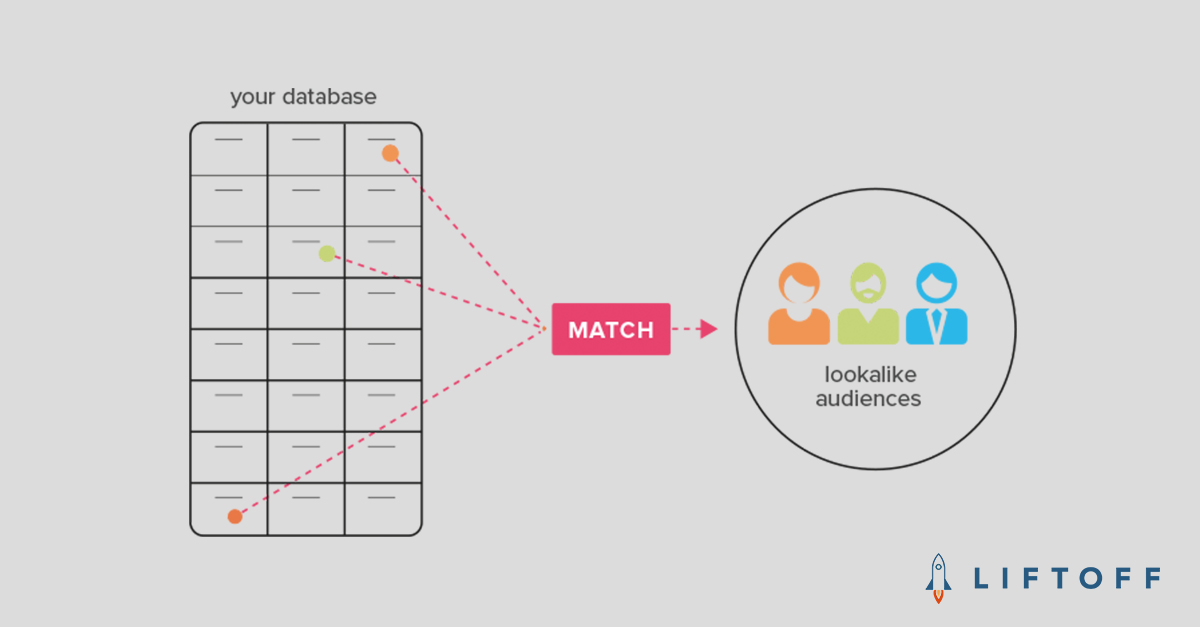The days when producing an app and getting it placed in a store was all it took to be a successful developer are long gone. Competition is fierce, with some 115 billion mobile app downloads in 2016. However, with such a large customer base already out there, using targeted lookalike audiences with Liftoff for app user acquisition is a highly viable strategy.
How It Works
A lookalike audience model is constructed based upon data defining the active users of your app. Once this group is identified, user characteristics can be applied toward finding new potential users who have a similar profile. This allows you to build your brand and engage prospects who may have yet to learn of your app(s). However, since you’re reaching out to people who are very similar to the people who already enjoy your product, the odds of appealing to them are much higher, meaning you’re likely to attain a better return on your advertising spending (ROAS) in this regard.
Targeting a Lookalike Audience
The key to being able to target a lookalike audience is understanding who uses your app—not just downloads it, but engages with it over time. You’ll need a working database of profiles matching these proven app users who have converted (and thus have a high customer lifetime value). Among the key factors to consider are location, age range, interests, device usage and other online activity. These are used to identify people who ‘look’ and ‘act’ like your core user base to see your ad. This minimizes the possibility of wasting advertising dollars on people who may have only tangential interest in your application.
This strategy typically returns the best ROAS, as it most closely matches the group already demonstrating an interest in your application.
Additional Segmentation Parameters
While some favorable audience factors are obvious, such as people who bought and used your app in the past 30 days, you can actually drill down more deeply. For example, you can exclude people who use older mobile networks in favor of people who employ newer ones. This gives you the capability of specifically targeting people who use 4G, LTE and Wi-Fi, as they are more likely to use smartphone applications and click on ads.
Retargeting Audiences
The technique can also be used to retarget potential users who have shown an interest in the past, by installing your app but not actually engaging and converting. You can go after people who added a product to the shopping cart, but then abandoned the purchase. You can also do things like target those who spent more than a set amount of time considering the in-app features, but didn’t convert. Showing them the ad again could entice the ones who were close to making a purchase, but didn’t follow through for whatever reason.
Ongoing Benefits of Using Lookalike Audiences
There’s more good news: As more users engage with your app, your target audience grows. This means you’re getting better mobile app marketing information for the future so you can continue to learn more about your ideal customer base and target high-value lookalike users with increasing precision. As you gain insights, you can refine your campaigns.
As you can see, using targeted lookalike audiences for app user acquisition can be a very powerful marketing tool. One of the basic axioms of sales is it’s always easier and less expensive to hold on to an existing customer than convert a new one. With lookalike targeting, you’ll get the best of both. After all, you’re talking to people who are just like the people who have already bought from you.
Liftoff can make this work for you today.
